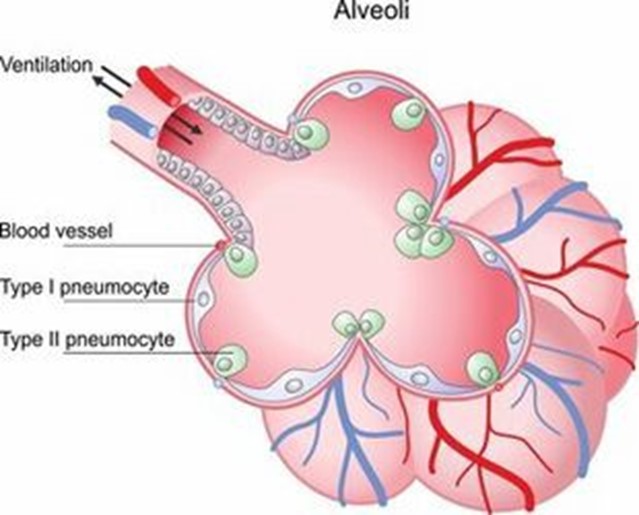A nurse is caring for a newborn immediately after birth. Which of the following actions by the nurse reduces evaporative heat loss by the newborn?
Maintaining ambient room temperature at 24° C (75° F).
Drying the newborn's skin thoroughly.
Preventing air drafts.
Placing the newborn on a warm surface.
The Correct Answer is B
A. Maintaining ambient room temperature at 24° C (75° F) can help prevent heat loss by keeping the environment warm, but it does not specifically address evaporative heat loss. Evaporative heat loss occurs when moisture on the skin evaporates, which is not directly controlled by ambient temperature.
B. Drying the newborn's skin thoroughly reduces evaporative heat loss by removing moisture that can evaporate and cool the skin. This action is critical immediately after birth when the newborn is wet with amniotic fluid.
C. Preventing air drafts helps reduce convective heat loss, not evaporative heat loss. Convective heat loss occurs when air moves across the skin and carries heat away.
D. Placing the newborn on a warm surface helps reduce conductive heat loss by preventing heat transfer from the baby to a cooler surface. However, this does not address evaporative heat loss, which is specifically related to moisture evaporation from the skin.
Nursing Test Bank
Naxlex Comprehensive Predictor Exams
Related Questions
Correct Answer is B
Explanation
Choice A rationale:
Providing a heat source for the newborn is not the purpose of surfactant. Surfactant is a substance produced in the lungs to reduce surface tension and prevent alveolar collapse during expiration. It helps with the exchange of gases, but it does not generate heat.
Choice B rationale:

This is the correct answer. Surfactant plays a crucial role in assisting the alveoli to remain open by reducing surface tension. This, in turn, allows for proper gas exchange, especially of oxygen and carbon dioxide.
Choice C rationale:
Assisting the ductus arteriosus to remain open is not the purpose of surfactant. The ductus arteriosus is a fetal blood vessel that connects the pulmonary artery to the aorta, bypassing the lungs. After birth, it should close on its own, and surfactant does not influence this process.
Choice D rationale:
Providing energy to the newborn is not the purpose of surfactant. Energy for the newborn comes from nutrition, particularly breast milk or formula, and not from surfactant
Correct Answer is B
Explanation
"Baby powder will help prevent a diaper rash.”.
Choice A rationale:
"I will use mild soap”. indicates an appropriate understanding of newborn bathing. Mild soap is suitable for newborn skin to avoid irritation.
Choice B rationale:
This is the correct answer. Baby powder is not recommended for newborns as it can cause respiratory issues when inhaled and may lead to skin irritation. Therefore, the client needs further teaching about the use of baby powder.
Choice C rationale:
"I will test the water on my wrist for temperature before bathing”. demonstrates proper safety measures, ensuring the water is not too hot for the baby.
Choice D rationale:
"I will use a basin during bathing”. is a reasonable approach to bathing the newborn and does not indicate a need for further teaching.
Whether you are a student looking to ace your exams or a practicing nurse seeking to enhance your expertise , our nursing education contents will empower you with the confidence and competence to make a difference in the lives of patients and become a respected leader in the healthcare field.
Visit Naxlex, invest in your future and unlock endless possibilities with our unparalleled nursing education contents today
Report Wrong Answer on the Current Question
Do you disagree with the answer? If yes, what is your expected answer? Explain.
Kindly be descriptive with the issue you are facing.
